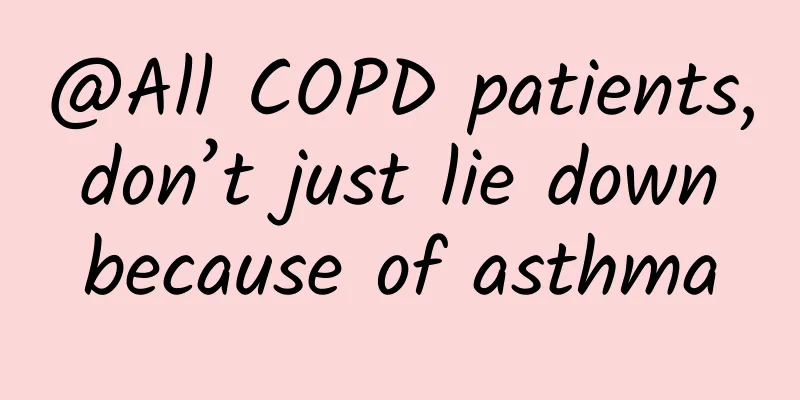Mooncakes are expired. Can they still be eaten?

|
The shelf life of food refers to the shortest period of time that food quality and safety can be guaranteed under specified storage conditions. How to understand the shelf life of food? This is a simple life question, but it is also a complex scientific question. Written by | Xiaoye During the Mid-Autumn Festival, it is a traditional activity to enjoy the moon and eat mooncakes. However, after buying a lot of mooncakes, it is inevitable to have some small troubles. The shelf life of mooncakes varies, from one month to four months. So, can you still eat expired mooncakes? What about those that are only expired for one day, one week, or even one month? How should we view the concept of shelf life? Microscopic killers that cause food spoilage As we all know, any food, whether fresh fruit or processed food, will eventually spoil if not consumed in time. For personal health and safety, the expiration date and production date are another key point that everyone will pay attention to in addition to the nutritional information table. Food spoilage can be defined as a process in which food becomes inedible due to quality deterioration. Common factors causing food spoilage include microorganisms, enzymes in food, oxidation, and physical causes. Microorganisms such as spoilage bacteria or molds can cause food spoilage through biochemical reactions with nutrients in food, which is also one of the most common ways of food spoilage. **[1]** In addition, food may also contain pathogenic bacteria that can cause serious illness after entering the human body. Food spoilage caused by microorganisms is inevitable, and we also have ways to delay this process. Refrigeration is an effective way to extend the quality period of food. However, some pathogens can grow and reproduce in low temperature environments, and Listeria monocytogenes is one of the representative "psychrophilic bacteria". Foods including milk and dairy products, meat and meat products, vegetables, and ice cream are all common vectors of Listeria. Ingestion of food contaminated with Listeria can lead to listeriosis, which can cause mild symptoms such as diarrhea and fever, while severe cases can lead to sepsis and meningitis. If a pregnant woman is unfortunately infected, she will experience fever, vomiting, coma, or even miscarriage. The bacteria can even enter the placenta through the blood, and the surviving baby is also prone to meningitis, leading to intellectual disability or death. [2] In July 2022, an outbreak of Listeria occurred in Florida and Ohio, USA. The source of the outbreak was that the ice cream produced by Big Olaf, a local American ice cream brand, with a shelf life of June 30 was contaminated with bacteria. According to the records of the Centers for Disease Control and Prevention (CDC) of the United States as of August 4, a total of 25 people were sick, 24 were hospitalized, and 1 died. **[3]** The ice cream company immediately recalled the contaminated products after the outbreak, and the CDC also warned consumers who had recently purchased their ice cream to quickly dispose of the expired products. The contaminated ice cream was still within the shelf life, so what quality does the shelf life guarantee, and how should the shelf life be determined? The Rigorous Science Behind Shelf Life In China, according to the Food Safety Law and relevant standards, the shelf life of food refers to the period during which the food maintains its quality under the specified storage conditions. “During this period, the flavor, taste and safety of the food are guaranteed.” The shelf life is determined by the manufacturer based on the characteristics of the food, accelerated experiments or test results. From an academic perspective, the shelf life we usually refer to is the shelf life [4] . Under the premise of complying with various national food safety standards, "accelerated testing" is the most commonly used method to predict the shelf life of food: assuming that the shelf life of food is one year, manufacturers usually use only three months in a high temperature and high humidity environment to simulate the changes in food quality within one year. During this period, researchers must determine various indicators at regular intervals, including sensory indicators and physical and chemical indicators such as spoilage caused by microorganisms, oil rancidity, and discoloration. **[5]** Subsequently, dynamic models and related formulas are used to predict the shelf life. In recent years, the dynamic models used by scientists at home and abroad are all based on the basic principles of material corruption and are mainly divided into three categories[6]: 1 Kinetic model of chemical quality decay As mentioned earlier, food spoilage is mostly due to biochemical changes, so scientists often use chemical quality decay kinetic models to predict shelf life. The Arrhenius model is one of them, which is suitable for foods that are easily destroyed by chemical reactions such as fat oxidation, Maillard reaction, and protein denaturation. This model was summarized by Swedish chemist Svante Arrhenius (1859-1927) in 1889 based on a large amount of chemical reaction data. It is used in the food industry to show the relationship between changes in food storage quality and temperature. Generally speaking, the higher the temperature, the faster the chemical reaction rate, which also means that the quality will deteriorate faster. Here, scientists introduce the Q10 temperature coefficient as a key variable, which is the change in food quality when the temperature changes by 10°C [7]. Arrhenius equation, where k is the reaction rate constant, R is the molar gas constant, T is the thermodynamic temperature, Ea is the apparent activation energy, and A is the pre-exponential factor (also called the frequency factor). [8] By combining the Arrhenius model with the Q10 coefficient, researchers can simulate the process of food quality decreasing as temperature changes, thus providing a good theoretical basis for predicting the shelf life of food. 2 Microbial growth kinetics model Microorganisms cause food spoilage, mainly due to the activity of specific spoilage organisms in food. The activity of microbial flora varies with the intrinsic factors and external environmental factors of different types of food. Therefore, the dynamic changes in their growth are an important factor in predicting the shelf life of food. At present, predictive food microbiology uses mathematical models, statistics, and computer applications to describe the growth process of microorganisms. It is generally divided into three levels of models. The first-level model is used to characterize the relationship between the number of microorganisms and time under certain growth environments and conditions; the second-level model adds environmental factors to the first-level model; and the third-level model integrates multiple models such as the first-level and second-level models into a software system[9] . Traditional predictive microbiology model construction methods and food predictive microbiology software have been relatively complete [10]. Main prediction models and software platforms for microbial growth (taken from screenshots, please refer to the original text for references) Source: Reference [10] As shown in the figure above, among the commonly used primary models, the Baranyi & Roberts model is the most widely used. It has many advantages: it is applicable to dynamic environments, the parameters in it have physiological significance, and it also coordinates the relationship between model parameters and accuracy. It can accurately predict the growth of microorganisms while using only a few parameters. This model can effectively predict the shelf life of some processed meat foods such as pickled and marinated products. [11] The Gompertz model is more suitable for describing the growth of microorganisms under suitable temperature conditions, and mainly focuses on the growth of pathogenic bacteria in food. For example, the Gompertz model can be used to fit the maximum growth rate of Salmonella . [12] The linear model and the logistic model are simple to use and are suitable for predicting microorganisms when the growth environment and influencing factors are single, but the disadvantage is that the prediction accuracy is not very high. The shelf life of foods such as milk and fruit juice drinks that are closely related to storage temperature can be predicted using these two models. 3 Sensory prediction model for shelf life We cannot detect the changes in the microorganisms in milk, but we will know immediately that the milk is expired when we smell a sour and pungent smell. In fact, sensory analysis is also an effective method used by scientists to test the quality of food. The sensory prediction of shelf life has been around since the 1990s. In addition to the results of microbiological and physical and chemical tests, sensory tests are also used to evaluate the duration and changes of sensory characteristics of food in terms of appearance, smell, taste, texture, trigeminal nerve sensation and flavor during the set storage period. [13] For foods with a long shelf life and safe consumption period, accelerated testing is also essential. The team of Petros S. Taoukis, a professor of food science and nutrition at the National Technical University of Athens, proposed the principles and eight steps of accelerated shelf-life testing (ASLT) [14] : 1. Evaluate microbiological safety factors in food production and processing; 2. Through comprehensive analysis of food ingredients, processing and expected storage conditions, determine the biological and physicochemical reaction factors that significantly affect the shelf life as indicators of quality loss; 3. Choose packaging suitable for shelf testing; 4. Determine the storage temperature during the test; 5. Calculate the test duration based on the selected temperature; 6. Determine the test type and frequency for each test temperature condition; 7. Plot the experimental data to determine the order of reactions and whether the frequency of testing needs to be changed; 8. Determine the reaction sequence and reaction rate according to each test storage condition, and use an appropriate kinetic model to predict the shelf life under ideal storage conditions; In the ASLT method, temperature is still the key parameter that determines food deterioration, and the relationship between temperature and deterioration rate can be calculated using the Arrhenius equation mentioned above. The most widely used analysis model at home and abroad is the Weibull hazard analysis for predicting product life and failure rate. This is a more practical method. The principle of this method is mainly the relationship between the cumulative hazard rate reflected by product rejection by consumers and the storage time. [6] The dual meaning of shelf life Although researchers can make predictions, from the laboratory to the supermarket shelf, the final decision on the expiration date presented to consumers on food packaging - mainly in the form of a shelf life - is still in the hands of the manufacturer, and the shelf life here has a dual meaning. First of all, the understanding of the shelf life should be more inclined to the best consumption period rather than the final consumption period. Food deterioration is a continuous process. The shelf life is a certain period of time during which the quality is presumed to reach and maintain the qualified standards. It is neither a certificate of product quality nor a clear dividing line between edible and inedible. Moreover, the "quality" involved often refers to the "quality" that is most likely to become unqualified. For example, fried instant noodles can generally be stored for up to two years. However, the noodles are easily oxidized and deteriorated, which is harmful to health. Therefore, the shelf life of fried instant noodles is usually marked as 6 months. Secondly, according to the definition of the shelf life of pre-packaged food in China's T/CNFIA 001-2017 "General Guidelines for the Shelf Life of Food"[15] and the "Food Safety Law"[16], we should regard it as a promise made by merchants to consumers: as a legal concept, the shelf life of food determines the limits of the manufacturer's responsibility for food safety. Within the shelf life, as long as the storage conditions are followed, the manufacturer is responsible for the flavor, taste and safety of the food. Merchants can sell it with confidence and consumers can eat it with confidence. Once the food within the shelf life causes health hazards, the manufacturer needs to bear the corresponding legal liability. This also explains the motivation of the American ice cream manufacturer to recall the ice cream products that were contaminated within the shelf life mentioned above. However, if consumers hoard food that has exceeded the shelf life and then consume it later and cause adverse consequences, they cannot ask the manufacturer to be responsible or compensate. From this perspective, the shelf life is equivalent to a "disclaimer clause" that protects the manufacturer rather than the consumer. [17] A variety of shelf life labels Careful consumers may find that when purchasing food, sometimes there is more than one date marked on the packaging, which is confusing. In fact, different countries have their own regulations on food expiration date labeling. In my country, according to GB 7718-2011 “National Food Safety Standard General Rules for Prepackaged Food Labeling” [18], the expiration date related labels include: In the United States, according to the recommendations of the U.S. Food and Drug Administration [19], there are four common dates on food packaging, which are generally marked according to the nature of the food. The first is that the outer packaging of the food must be marked with a "sell-by" date, which means that the store can only sell these foods before this date. However, it does not mean that the food cannot be eaten after this date. It will leave room for consumers to eat and store it after purchase. The second is called "best if used by/before", which refers to the best time for the taste or quality of the food. The third is "use by", which is the last date of consumption of the food. Generally, this date is the longest, and the food must be destroyed after this date. The fourth type, such as canned food, must also be marked with a "closed or coded date" so that problems can be investigated. The best taste period marked on foods sold in the United States | Image source: U.S. Food and Drug Administration The shelf life of food sold in Japan is divided into "expiration date" and "best before date". The former is mostly used for perishable foods (such as fresh food), indicating the period of time that the food can be safely eaten if it is unopened; the latter is mostly used for processed foods whose quality does not easily deteriorate (food that can be stored in the refrigerator or at room temperature), and is the period of time that can guarantee the quality and taste of the food. [16] Can we eat food that has exceeded its shelf life? After reading this, we have a certain understanding of the concept of shelf life. The answer to the question of whether food that has passed its shelf life can be eaten is not an either-or answer, but needs to be judged accordingly based on different conditions. Of course, eating expired food should not be encouraged. The shelf life applies to pre-packaged food. For unopened food that has exceeded its shelf life, if it is properly stored and packaged, and the product itself is produced through processing methods such as pickling and canning, or the food ingredients themselves are relatively stable and durable, then if the color, aroma and taste have not changed after opening, it can still be eaten. [20] In addition, in actual production, the shelf life on food labels is generally conservative, and most companies will retain some margin. In other words, if "qualified food produced according to normal processes is preserved, under the premise of being unopened and without packaging defects, its actual shelf life will be slightly longer than the label date." [5] However, for foods with a short shelf life that require certain storage conditions, such as bread, fresh milk, bacon, etc., these high-protein foods are prone to breeding microorganisms, and the health risks of foods after the shelf life are very high. In fact, in many cases, we can tell whether food is edible by its appearance and smell. Since the shelf life is a manufacturer's safety responsibility commitment, it is best for consumers to still use the shelf life as the standard for consumption. When we buy food, we should also try to consume rationally and avoid unnecessary waste caused by storing it for too long. References 1 GJ.E.NychasE.Panagou, Microbiological spoilage of foods and beverages. Food and Beverage Stability and Shelf Life (2011):3-28 https://www.sciencedirect.com/science/article/pii/B9781845697013500013 2 Beware of Listeria, the killer in the refrigerator https://www.sohu.com/a/252181912_259523 3 https://www.cdc.gov/listeria/outbreaks/monocytogenes-06-22/index.html 4 E. Torrieri,Storage Stability: Shelf Life Testing. Encyclopedia of Food and Health (2016):188-192 https://www.sciencedirect.com/science/article/pii/B9780123849472006668 5 Chen Jiayin. "Things about Food Shelf Life." Capital Food and Medicine 23.11(2016):31. 6 Qiang Wanli, et al. "Analysis of the research status of food shelf life." Journal of Cereals, Oils and Food Science and Technology 28.04(2020):43-47. 7 https://en.wikipedia.org/wiki/Q10_(temperature_coefficient) 8 https://en.wikipedia.org/wiki/Arrhenius_equation 9 Li Qiupeng. "Research progress of three-level model of food predictive microbiology." Agricultural Products Processing (Journal). 17(2013):54-56. 10 Zhang Wenmin, et al. Research progress on interaction models between microorganisms in food. Food Science 41.01(2020):277-283. 11 Liu Yabing, et al. "Study on prediction model of food microbial growth." Food Industry 37.11(2016):159-164. 12 Peng Yabo, et al. "Growth kinetics model of Salmonella and background flora in chicken." Food Science 40.09(2019):7-15. 13 Sensory analysis of food shelf life assessment (evaluation and determination) 14 TAOUKIS P, LABUZA T, SAGUY I. Kinetic of food deterioration and shelf-life prediction. In Handbook of Food Engineering Practice (1997): 361-403. 15 General Guidelines for Food Shelf Life T/CNFIA 001-2017 http://www.cnfia.cn/wp-content/uploads/2021/07/TCNFIA001-2017.pdf 16 Food Safety Risk Analysis: Scientific Interpretation of "Shelf Life" http://www.gov.cn/xinwen/2015-11/11/content_2964035.htm 17 Sun Chunan, Chu Yanpei. "Correctly understand the shelf life of food." Modern Flour Industry 32.04(2018):28-30. 18 General Rules for Labelling of Prepackaged Foods (GB7718-2011) http://www.nhc.gov.cn/wjw/aqbz/201106/a054a6affd0e489da150cf2b51a971a7.shtml 19 https://www.fsis.usda.gov/food-safety/safe-food-handling-and-preparation/food-safety-basics/food-product-dating 20 Can you judge whether food is edible by looking at its expiration date? https://piyao..cn/h5/rumordetail?id=Zykz Special Tips 1. Go to the "Featured Column" at the bottom of the menu of the "Fanpu" WeChat public account to read a series of popular science articles on different topics. 2. Fanpu provides a function to search articles by month. Follow the official account and reply with the four-digit year + month, such as "1903", to get the article index for March 2019, and so on. Copyright statement: Personal forwarding is welcome. Any form of media or organization is not allowed to reprint or excerpt without authorization. For reprint authorization, please contact the backstage of the "Fanpu" WeChat public account. |
<<: Shanghai Synchrotron Radiation Light Source takes pictures of molecules
Recommend
Android 5.0: Google strikes a balance between data and design
[[122991]] The launch of Android 5.0 means that G...
The father of Moto 360: Changing the world one product at a time
[[138363]] [Key Points] Lior Ron is a Silicon Val...
Second-hand mobile phones leak user privacy? It's not difficult to "fight back"
In recent days, a report from CCTV has made the p...
27 provinces have resumed passenger routes! Will there be any impact on epidemic prevention and control? Attached is the specific list!
At present, except for Hubei Province, the epidem...
18 super cool magic lessons
18 super cool magic lessons resource introduction...
From domestication and breeding 1.0 to intelligent design 4.0, this is the power of seeds!
Rice provides staple food for about 50% of the wo...
How do the old men in the park master the secret of whipping at supersonic speeds?
Everyone must be familiar with whips. They can be...
Many countries have recently reported high incidence and death cases. The Chinese Embassy reminds you! Beijing CDC: Be alert——
The Mid-Autumn Festival and National Day holidays...
Who is jumping around on the beach? Of course, it’s the “Bouncing Prince” of the fish world.
Mudskippers, also known as jumping fish and loach...
Detailed prices and effects of Internet companies placing official advertisements on Sina Weibo Fans Channel
Which Internet companies are suitable for Sina We...
The history of the development of the first iPhone: Engineers didn’t know what they were building
When Jobs decided that Apple needed its own smart...
Can alarm clocks also threaten our health? Multiple alarm clocks make people fall into a "sleep swamp"
China Science and Technology News Network, Februa...
Popular Science Illustrations丨One picture shows you what “top-tier” treatment giant pandas have?
...
Please be kind to your programmers, otherwise hum!
[[127840]] Yan, a programmer born in the 1990s, w...









